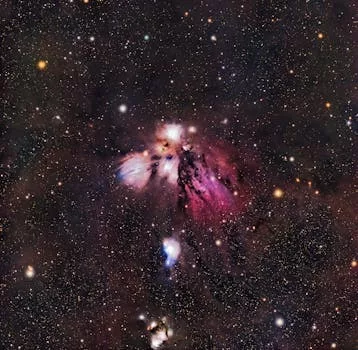
“
Beyond the Milky Way: Imagining New Worlds and Possibilities
Beyond the Milky Way: Imagining New Worlds and Possibilities is a topic that has fascinated humans for centuries. As we continue to explore and understand our universe, we are constantly reminded of the vastness and complexity of the cosmos. In this article, we will delve into the possibilities that exist beyond our galaxy and explore the new worlds that await us.
Introduction to the Universe
The universe is estimated to be around 13.8 billion years old and contains over 200 billion galaxies, each containing billions of stars and planets. Our galaxy, the Milky Way, is just one of these galaxies, and it is home to our solar system and an estimated 100-400 billion stars. However, there is still so much that we do not know about the universe, and it is this mystery that drives us to continue exploring and seeking out new knowledge. For more on the imaginative aspects of our universe, check out Charting New Realms: The Journey of Imagination Beyond the Stars.
Exploring the Cosmos
As we explore the cosmos, we are constantly reminded of the vastness and complexity of the universe. From the majestic spiral arms of distant galaxies to the mysterious darkness of black holes, the universe is full of wonders and mysteries waiting to be uncovered. With the help of advanced telescopes and spacecraft, we are able to study the universe in greater detail than ever before, and this has led to some remarkable discoveries. This exploration is akin to the themes discussed in Beyond Stars: Where Imagination Takes Flight.
New Worlds and Possibilities
One of the most exciting areas of research in astronomy is the search for new worlds and possibilities beyond our galaxy. With the discovery of exoplanets, which are planets that orbit stars other than our sun, we are beginning to realize that the possibility of life existing elsewhere in the universe is very real. In fact, scientists estimate that there could be tens of billions of potentially habitable planets in the Milky Way galaxy alone, and this number could be even higher when we consider the vast number of galaxies that exist beyond our own. The creativity involved in this exploration is reminiscent of ideas explored in Cosmic Creativity: How Imagination Soars Beyond the Constellations.
Conclusion and Takeaways
In conclusion, the universe is a vast and complex place, full of mysteries and wonders waiting to be uncovered. As we continue to explore and understand the cosmos, we are constantly reminded of the new worlds and possibilities that exist beyond our galaxy. The takeaway from this article is that the universe is full of endless possibilities, and it is up to us to continue exploring and seeking out new knowledge to uncover its secrets. Some key takeaways from this article include:
- The universe is estimated to be around 13.8 billion years old and contains over 200 billion galaxies.
- Our galaxy, the Milky Way, is just one of these galaxies, and it is home to our solar system and an estimated 100-400 billion stars.
- The possibility of life existing elsewhere in the universe is very real, with scientists estimating that there could be tens of billions of potentially habitable planets in the Milky Way galaxy alone.
- The universe is full of mysteries and wonders waiting to be uncovered, and it is up to us to continue exploring and seeking out new knowledge to uncover its secrets.


